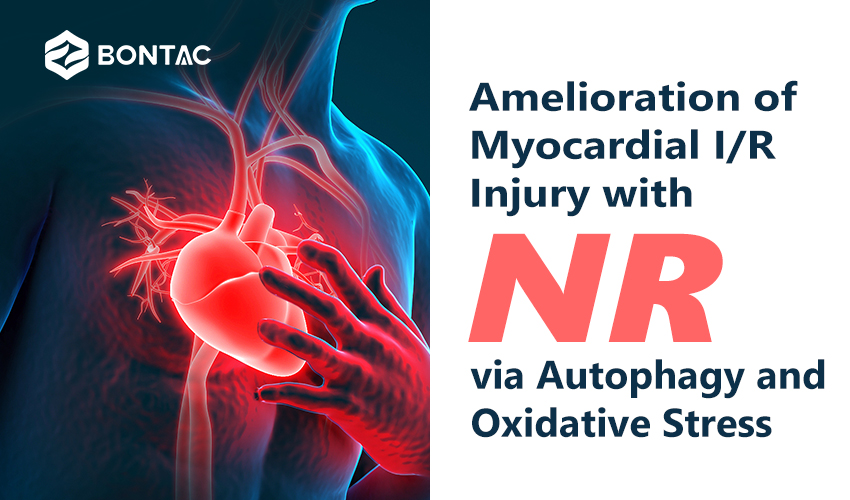Introduction
Myocardial ischemia-reperfusion (I/R) injury has emerged as an urgent clinical issue that may offset the benefits of reperfusion therapy and even worsen the prognosis of acute myocardial infarction, a severe cardiovascular disease with significant mortality and morbidity. Nicotinamide riboside (NR), a nicotinamide adenine dinucleotide (NAD+) intermediate, has been unveiled to hold great therapeutic potential in myocardial I/R injury.
About myocardial I/R injury
Myocardial I/R injury refers to the damaging effects on cardiomyocytes or heart tissues following ischemia and the regaining of blood perfusion or oxygen supply, with characteristics of cell swelling, contracture of myofibrils, and disruption of the sarcolemma in myocardium. The mechanisms of myocardial I/R injury are extremely complex, chiefly involving cellular and molecular biological events such as cellular oxidative stress, intracellular calcium overload, mitochondrial dysfunction, inflammatory response, apoptosis and autophagy. Strikingly, autophagy and oxidative stress have been perceived as vital factors in the treatment of myocardial I/R injury.
The alleviating effects of NR on myocardial I/R injury in mice
NR can improve the cardiac function of mice with myocardial I/R injury, and reduce the generation of myocardial injury- and oxidative stress-associated biomarkers. Herein, the optimal concentration of NR for protection against H/R injury is 10 mM.
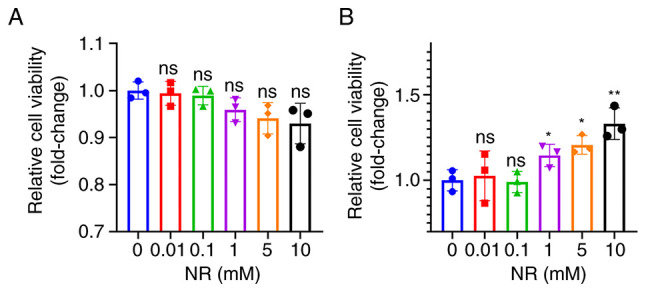 In vivo, NR diminishes the area of myocardial ischemic infarction, alleviates pathological myocardial changes, decreases inflammatory cell infiltration, and attenuates the levels of mitochondrial reactive oxygen species (ROS) as well as creatine kinase myocardial band (CK-MB).
In vivo, NR diminishes the area of myocardial ischemic infarction, alleviates pathological myocardial changes, decreases inflammatory cell infiltration, and attenuates the levels of mitochondrial reactive oxygen species (ROS) as well as creatine kinase myocardial band (CK-MB).
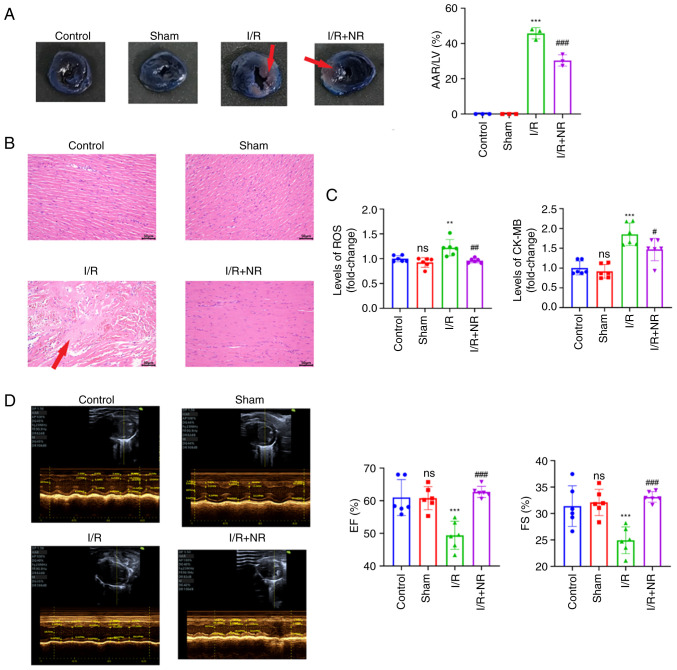 In vitro, NR pretreatment lessens the levels of lactate dehydrogenase, CK-MB, malondialdehyde, superoxide dismutase and ROS, as well as the mortality of H9c2 cells after the induction of hypoxia/reoxygenation (H/R) injury.
In vitro, NR pretreatment lessens the levels of lactate dehydrogenase, CK-MB, malondialdehyde, superoxide dismutase and ROS, as well as the mortality of H9c2 cells after the induction of hypoxia/reoxygenation (H/R) injury.
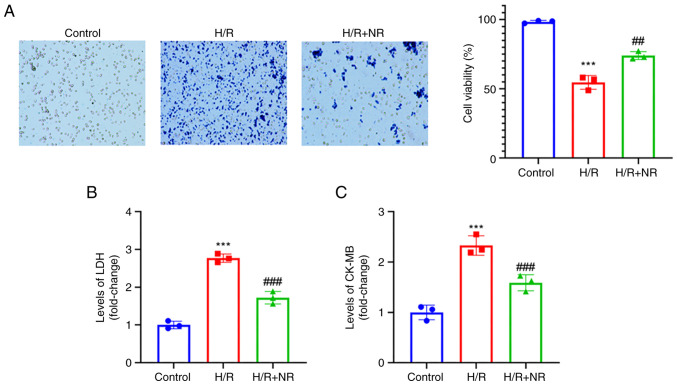

The significance of Sirt 1 pathway in the regulation of autophagy by NR
Excessive autophagy can exacerbate I/R injury, giving rise to an increase in cardiomyocyte apoptosis and greater cardiac dysfunction. Noteworthily, NR can lead to the activation of Sirt 1, an NAD+-dependent enzyme, to protect the H9c2 cells against excessive autophagy, thereby alleviating the myocardial I/R injury.
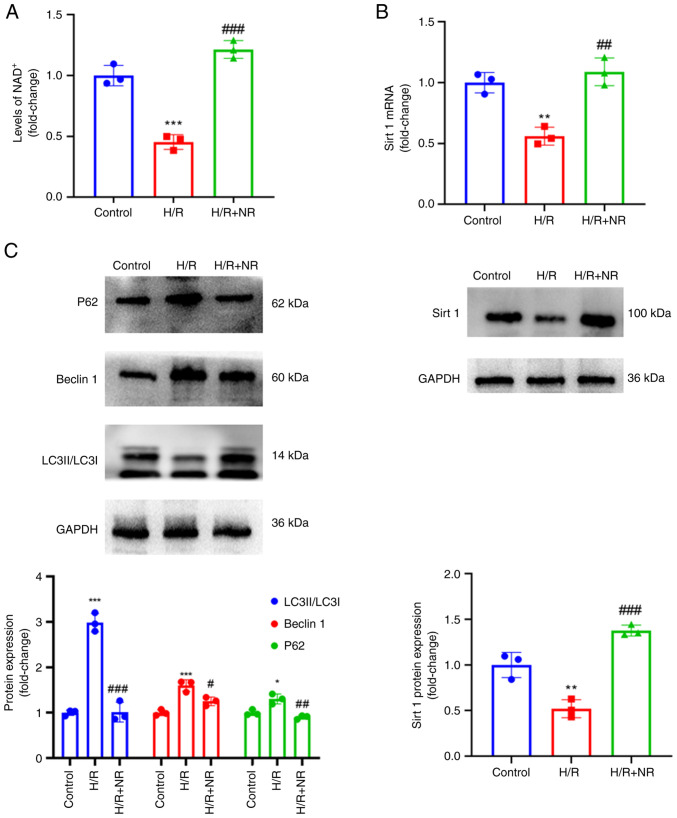 Post NR pre-treatment, the levels of autophagy-related proteins (Beclin 1, P62 and LC3II/LC3I) are apparently downregulated in the H9c2 cells challenged with H/R. Remarkably, the supplement of Sirt 1 inhibitor EX527 overtly attenuates NR-induced reduction in the expression levels of autophagy-related proteins under H/R conditions, hinting the significance of Sirt 1 in the regulation of autophagy by NR.
Post NR pre-treatment, the levels of autophagy-related proteins (Beclin 1, P62 and LC3II/LC3I) are apparently downregulated in the H9c2 cells challenged with H/R. Remarkably, the supplement of Sirt 1 inhibitor EX527 overtly attenuates NR-induced reduction in the expression levels of autophagy-related proteins under H/R conditions, hinting the significance of Sirt 1 in the regulation of autophagy by NR.
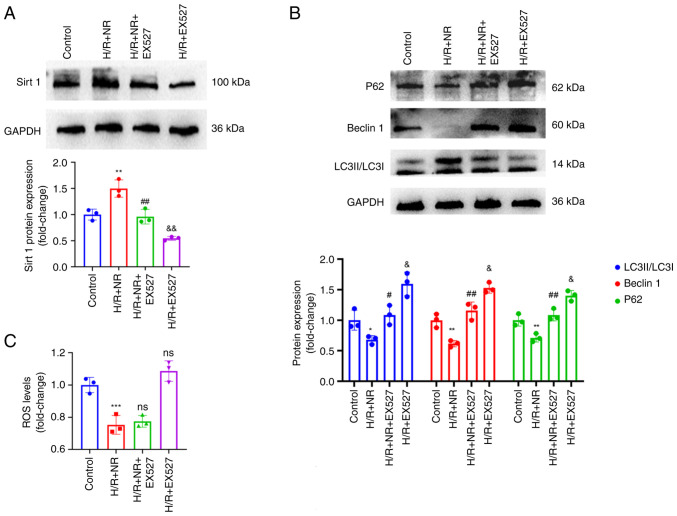
Conclusion
The myocardial I/R injury can be ameliorated by regulating the autophagy and oxidative stress with NR. On the one hand, NR can directly participate in oxidative reduction to lessen the level of oxidative stress in cardiomyocytes. On the other hand, NR can protect cardiomyocytes against excessive autophagy, which is possibly accomplished by increasing the NAD+ content in the body via the Sirt 1 pathway.
Reference
Yuan C, Yang H, Lan W, et al. Nicotinamide ribose ameliorates myocardial ischemia/reperfusion injury by regulating autophagy and regulating oxidative stress. Exp Ther Med. 2024;27(5):187. doi:10.3892/etm.2024.12475
BONTAC is one of the few suppliers in China that can launch mass production of raw materials for NR, with self-owned factory and professional R&D team. Up till now, there are 173 BONTAC patents. BONTAC provides one-stop service for customized products. Both malate and chloride salt forms of NR are available. By dirt of unique Bonpure seven-step purification technology and Bonzyme Whole-enzymatic method, the product content and conversion rate can be maintained in a higher level. The purity of BONTAC NR can reach above 97%. Our products are subjected to strict third-party self-inspection, which are worth of trustworthy.
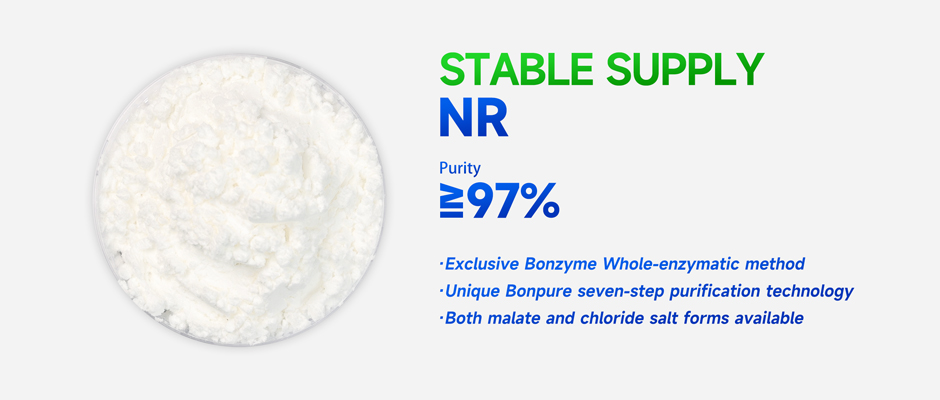
Disclaimer
This article is based on the reference in the academic journal. The relevant information is provided for sharing and learning purposes only, and does not represent any medical advice purposes. If there is any infringement, please contact the author for deletion. The views expressed in this article do not represent the position of BONTAC.
Under no circumstances will BONTAC be held responsible or liable in any way for any claims, damages, losses, expenses, costs or liabilities whatsoever (including, without limitation, any direct or indirect damages for loss of profits, business interruption or loss of information) resulting or arising directly or indirectly from your reliance on the information and material on this website.
